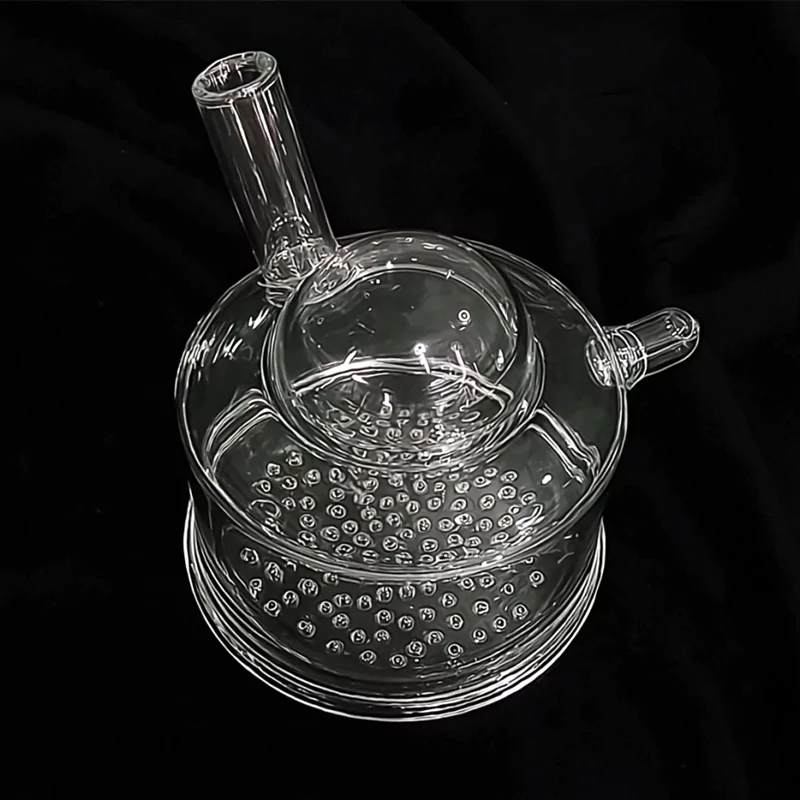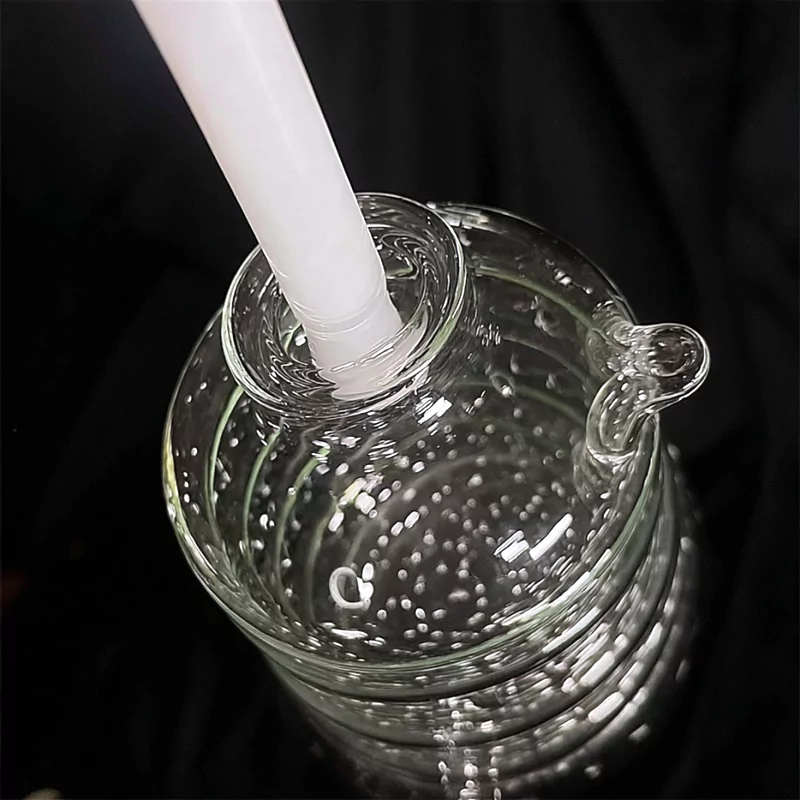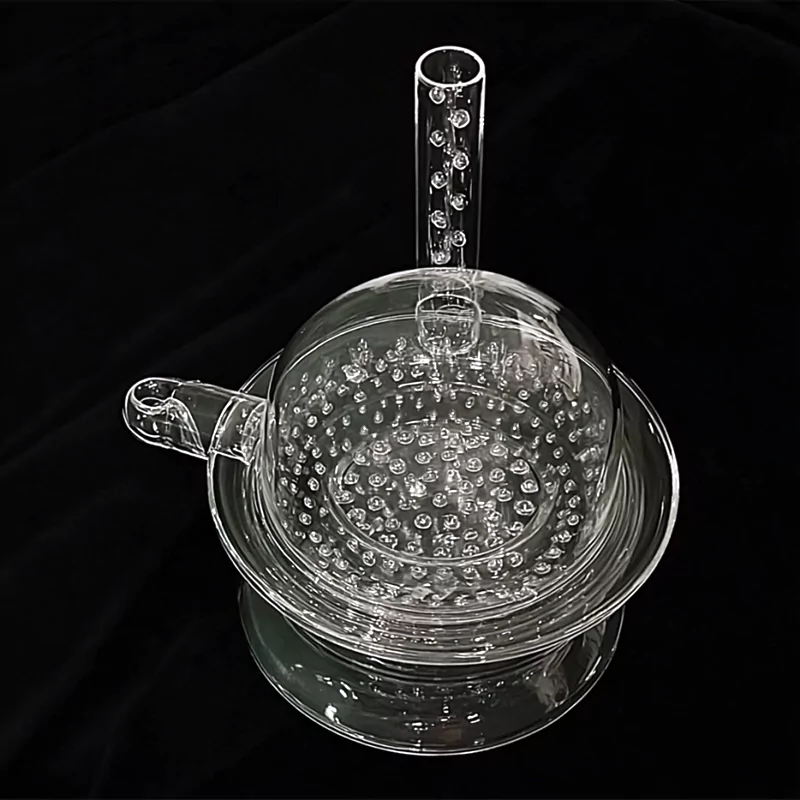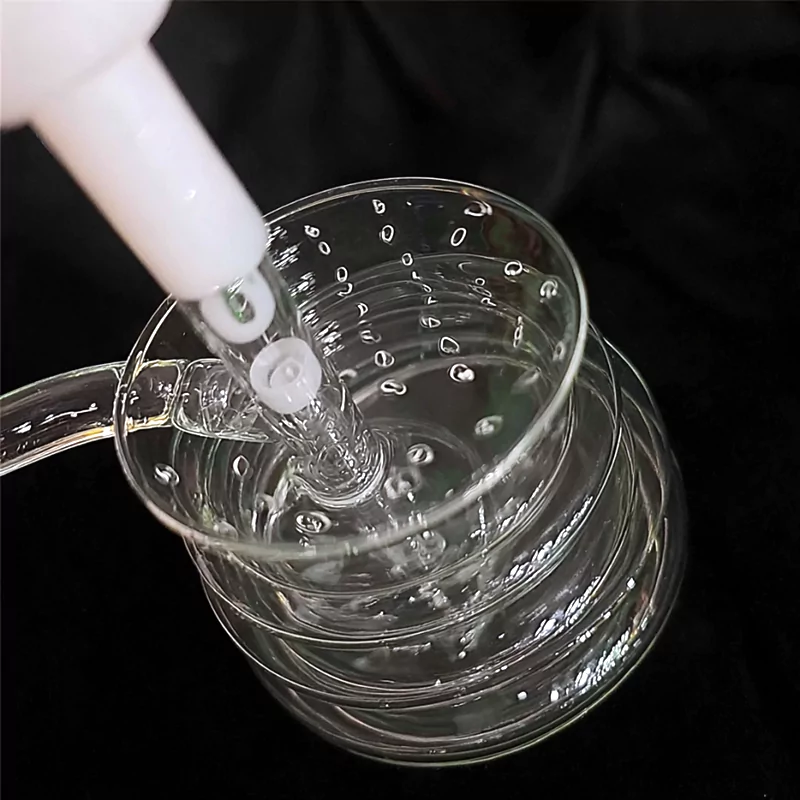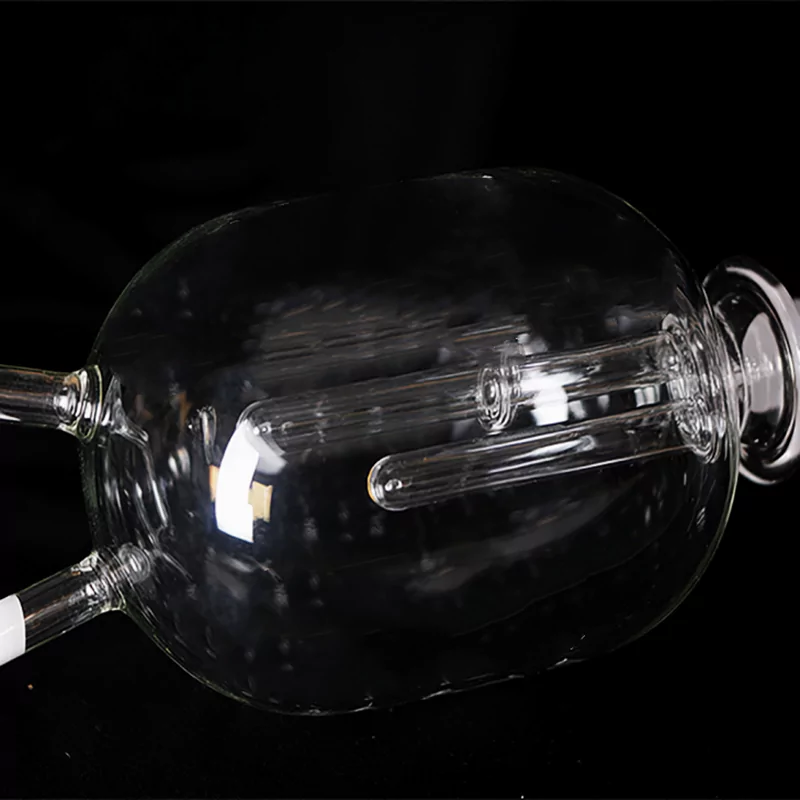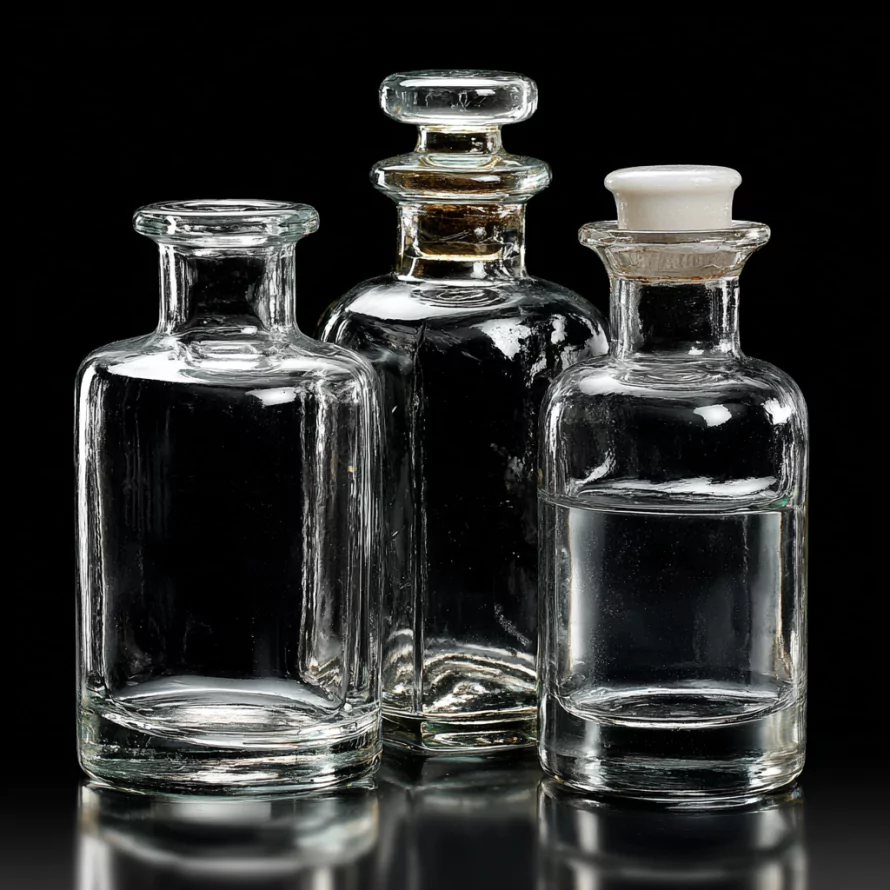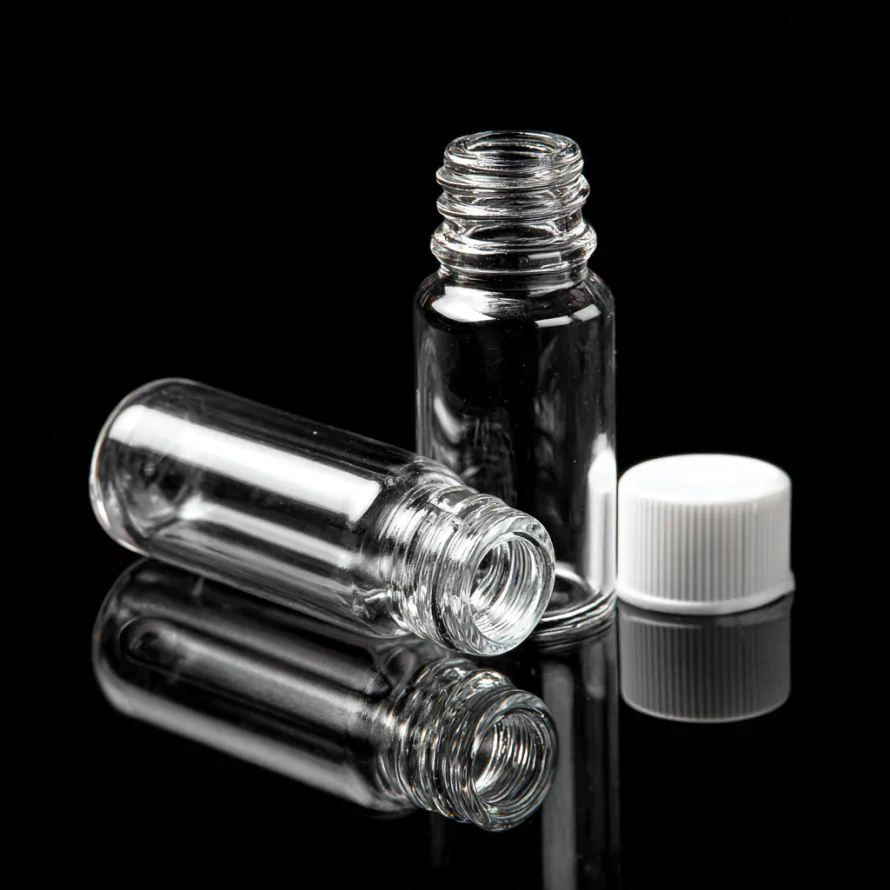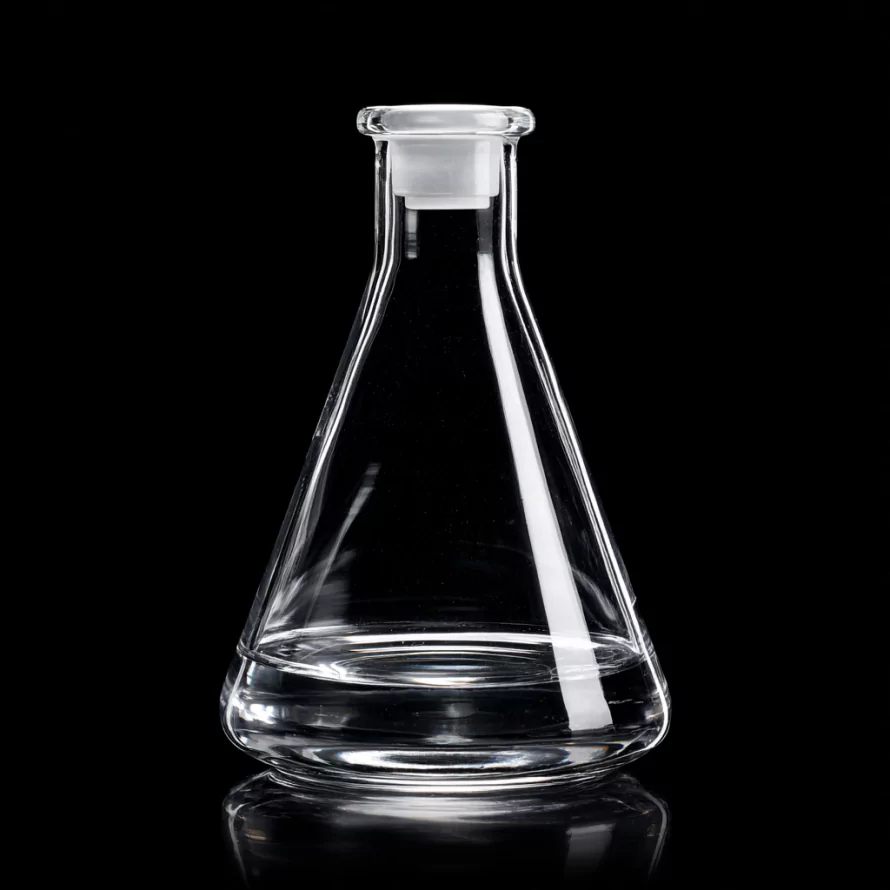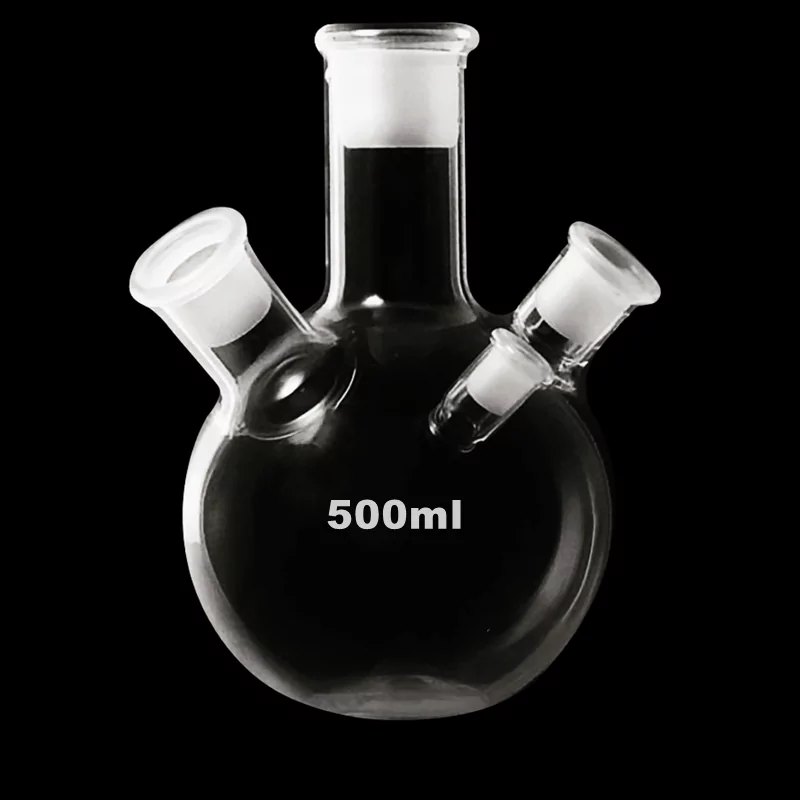- Home
- /
- Applications
- /
- Semiconductor Quartz Glass
- /
- Custom Quartz Laboratory Waste...
Custom Quartz Laboratory Waste Bottle for Collecting Chemical Disposal -TOQUARTZ®
Features of Quartz Laboratory Waste Bottle
Physical Properties
- High mechanical strength (fracture modulus >350MPa)
- Excellent thermal shock resistance
- Low coefficient of thermal expansion (5.5×10⁻⁷/°C)
- Operating temperature up to 1200°C
- Outstanding thermal conductivity (120-160 W/m·K)
Chemical Properties
- Superior resistance to acids (including HF, HCl, HNO₃)
- Excellent stability against alkalis and salt solutions
- Inert to most chemical reactions, preventing contamination
- High material purity (99.99% SiO₂) for sensitive applications
- Non-porous surface prevents absorption of chemicals
Optical Properties
- Excellent transparency for visual monitoring of waste levels
- Allows observation of precipitation and separation processes
- High transmission across UV and visible light spectrum
- Uniform refractive index throughout the material
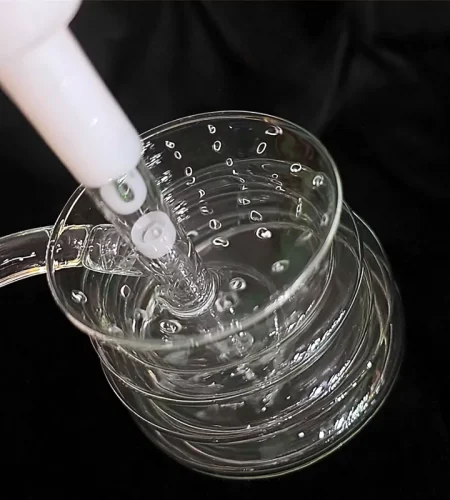
- 99.99% SiO₂ Purity
- Chemical Resistance
- Up to 1200°C
Technical Specifications of Quartz Laboratory Waste Bottle
| Property | Specification | Test Method |
| Material Composition | Fused Silica (99.99% SiO₂) | ICP-MS |
| Standard Capacity | 2000ml (Other sizes: 250ml, 500ml, 1000ml) | Volumetric |
| Wall Thickness | 1.5-3mm (±0.2mm tolerance) | Micrometer |
| Maximum Operating Temperature | 1200°C | ASTM C1161 |
| Thermal Expansion Coefficient | 5.5×10⁻⁷/°C (20-1000°C) | ASTM E228 |
| Thermal Conductivity | 120-160 W/m·K | ASTM C177 |
| Chemical Resistance | Resistant to most acids, alkalis, and salt solutions | ISO 719 |
| Standard Connection Type | Threaded (custom options available) | Visual Inspection |
| Transparency | >90% (UV-visible range) | Spectrophotometry |
Solving Laboratory Waste Management Challenges with
TOQUARTZ® Quartz Waste Bottles
Quartz Waste Bottles for Handling Corrosive Acids in Analytical Laboratories
Key Advantages
-
Superior acid resistance:
Maintains structural integrity even with concentrated HF exposure -
Extended service life:
Reduces replacement frequency by up to 400% compared to plastic containers -
Prevention of cross-contamination:
Non-reactive surface preserves chemical purity -
Visual monitoring capability:
Transparent material allows waste level assessment
TOQUARTZ® solution
A German analytical testing facility previously experienced container degradation within 3-4 weeks when using conventional containers for HF waste storage. After implementing TOQUARTZ quartz waste bottles, they reported zero container failures over a 12-month period, eliminating approximately €4,500 in annual replacement costs and preventing two potential safety incidents.
Fused Quartz Waste Bottles for High-Temperature Waste Collection in Research Facilities
Key Advantages
-
Extreme thermal shock resistance:
Withstands rapid temperature changes without cracking -
High temperature stability:
Maintains structural integrity up to 1200°C -
Low thermal expansion:
Prevents dimensional changes that could compromise connections -
Safety enhancement:
Reduces risk of container failure and chemical spills
TOQUARTZ® solution
A Japanese materials research institute previously experienced a 15% failure rate when collecting high-temperature waste from ceramic sintering processes. After adopting TOQUARTZ quartz waste collection bottles with specialized thermal transition zones, they reported zero thermal failure incidents over 50 experimental cycles, improving both safety compliance and research efficiency.
Quartz Glass Waste Bottles for Solar Cell Manufacturing Waste Processing
Key Advantages
-
Custom geometric configurations:
Enables efficient solid-liquid separation -
Precision connection compatibility:
Integrates seamlessly with existing systems -
Process observation capability:
Transparent material enables monitoring of separation efficiency -
Reduced waste processing costs:
Improves filtration and separation processes
TOQUARTZ® solution
A U.S. solar manufacturing facility implemented custom TOQUARTZ quartz waste bottles with integrated settlement chambers designed specifically for their diffusion process waste. This solution improved solid residue separation efficiency by 35%, reducing hazardous waste volume by approximately 20% and saving an estimated $12,000 annually in waste disposal costs.
TOQUARTZ® Customized Quartz Waste Collection Bottle Solutions
Custom Dimensions
Tolerance capabilities to ±0.2mm standard (±0.1mm available for critical dimensions)
- Capacity from 100ml to 5000ml
- Custom height-to-diameter ratios
- Wall thickness from 1.5mm to 5mm
- Specialized shapes for specific processes
- Space-optimized designs for restricted areas
Connection Options
Compatible with existing laboratory systems and equipment
-
Standard thread types
(GL45, GL32, etc.) - Custom thread specifications
-
Ground glass joints
(14/23, 19/22, 24/40, etc.) - Flanged connections (KF, CF, ISO)
- Multiple inlet/outlet configurations
Functional Features
Process-specific features to enhance efficiency and safety
- Integrated separation chambers
- Filtration mechanisms
- Level indicators or markings
- Specialized cooling jackets
- Safety overflow systems
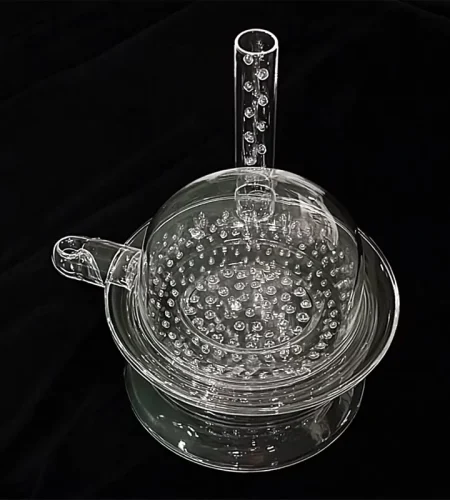
Common Customization Examples for Laboratory Waste Bottles
| Application | Custom Features | Benefits |
| HF Waste Collection | Double-wall construction with inspection window | Enhanced safety, leak detection capability |
| High-Temperature Process Waste | Thermal gradient zones, reinforced connection points | Improved thermal shock resistance, extended service life |
| Particulate-Heavy Waste | Settlement chamber, bottom drain valve | Efficient solid-liquid separation, reduced disposal costs |
| Photosensitive Material Waste | Amber-tinted quartz, UV filtering properties | Prevents degradation of light-sensitive compounds |
Usage Guidelines of Quartz Laboratory Waste Bottle
Proper handling, installation, and maintenance of quartz waste bottles ensures maximum service life, safety, and performance in laboratory environments. Follow these guidelines to optimize your investment in high-purity quartz waste collection systems.
Installation Guidelines
- Inspect the quartz waste bottle for any damage before installation.
- When connecting to waste systems, use appropriate adapters designed for quartz connections to prevent overtightening.
- For threaded connections, use PTFE tape rather than standard pipe sealants which may contain contaminants.
- Mount waste bottles securely using non-metallic supports with cushioning to prevent stress points.
- Ensure sufficient clearance around the bottle for thermal expansion during high-temperature operation.
- Install in well-ventilated areas when collecting volatile waste chemicals.
Handling Precautions
- Always wear appropriate PPE when handling quartz waste bottles, especially when containing hazardous waste.
- Avoid sudden temperature changes exceeding 200°C/minute, despite quartz's excellent thermal shock resistance.
- Do not apply mechanical stress to connection points when bottles contain waste.
- Fill bottles to maximum 80% capacity to allow for thermal expansion of contents.
- When transporting filled bottles, use specialized carriers with shock absorption.
- Label all waste bottles according to laboratory safety protocols and applicable regulations.
Maintenance and Cleaning
- Empty and clean waste bottles regularly according to your laboratory's waste management schedule.
- For cleaning, rinse with compatible solvents followed by deionized water; avoid abrasive cleaning methods.
- For persistent residues, soak in appropriate cleaning solutions compatible with quartz (avoid strong alkali solutions above pH 10 for prolonged periods).
- Periodically inspect bottles for signs of etching, stress cracks, or other damage, particularly around connection points.
- Store empty bottles in clean, dry areas away from mechanical stress.
- For sterilization, quartz bottles can be autoclaved or dry-heat sterilized up to 1000°C.
Need Expert Guidance for Your Quartz Waste Bottle Requirements?
Get professional advice tailored to your specific waste management needs.
Why Partner with TOQUARTZ
Direct Factory Advantage
As a direct manufacturer, we can cut out the numerous intermediate links.
Engineering Expertise
Technical team guides clients from material selection to design optimization, translating specs into deliverables.
Flexible Manufacturing
Handling standard & custom orders via small-batch expertise and prototyping rigor to meet urgent deadlines.
Quality
Assurance
Pre-shipment 3-step validation:
1. dimensional accuracy,
2. material purity ,
3. performance thresholds
Global Supply Chain
Reliable global logistics to industrial hubs (DE/US/JP/KR priority) with trackable milestones.
Releted Products
As a specialized manufacturer with direct factory capabilities, TOQUARTZ provides both standard and custom quartz solutions with engineering support throughout the specification and implementation process.
FAQ
Q: What makes quartz waste bottles superior to standard glass or plastic containers?
A: Quartz waste bottles offer exceptional chemical resistance (including to hydrofluoric acid), thermal stability up to 1200°C, and thermal shock resistance that standard borosilicate glass cannot match. Unlike plastic containers, they don’t leach contaminants, absorb chemicals, or degrade when exposed to solvents. This results in longer service life, improved safety, and prevention of sample contamination in laboratory environments.
Q: What custom features can be added to quartz waste bottles?
A: Custom features include specialized connection types (threaded, ground glass, flanged), multiple inlet/outlet ports, graduation markings, integrated filtration or separation chambers, cooling jackets, customized shapes for specific equipment integration, and specialized thermal zones for high-temperature applications. Our engineering team can develop solutions for specific laboratory requirements.
Q: What is the purity level of the quartz material used in your waste bottles?
A: Our standard quartz waste bottles are manufactured using high-purity fused silica containing 99.99% SiO₂ (trace impurities <100ppm total). This provides excellent chemical resistance and prevents contamination of sensitive waste samples. For ultra-high purity applications, we can source 99.995% SiO₂ materials upon request.
Q: What connection types are available for quartz waste bottles?
A: Standard connection options include GL45 threads (most common), GL32, GL25, standard ground glass joints (14/23, 19/22, 24/40, 29/42), and various flange types (KF, CF, ISO). We can also create custom connections to match existing laboratory equipment or fabricate adapters for specialized systems.
Q: How do quartz waste bottles compare to PTFE containers for corrosive waste?
A: While both materials offer excellent chemical resistance, quartz provides superior temperature resistance (1200°C vs. ~260°C for PTFE), better transparency for visual monitoring, higher rigidity for structural stability, and doesn’t absorb organic compounds. PTFE may be preferred for extremely concentrated HF applications, while quartz excels in high-temperature and multi-purpose laboratory environments.
Contact our engineering team for technical consultation and pricing. We’ll help you select the optimal specifications for your application requirements.

